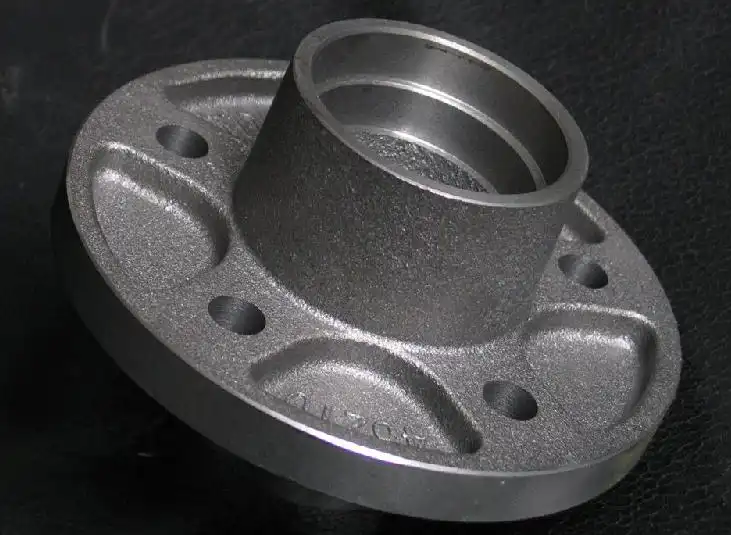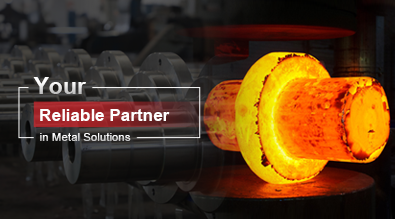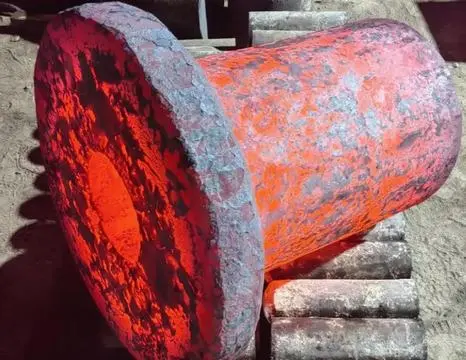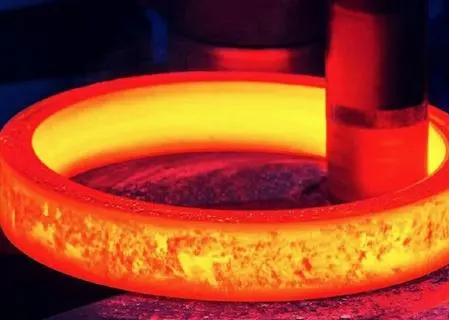Can You Weld Nodular Cast Iron?
Nodular cast iron is a versatile material widely used in various industries due to its excellent mechanical properties. However, when it comes to welding this material, many questions arise. In this blog post, we'll explore the possibilities and challenges of welding nodular cast iron, discussing its unique characteristics, suitable welding techniques, and important considerations to ensure successful welding outcomes.

What are the properties of nodular cast iron that affect welding?
Chemical composition of nodular cast iron
Nodular cast iron's chemical composition plays a crucial role in its weldability. This material is characterized by its spheroidal graphite structure, which is achieved through the addition of magnesium or cerium during the casting process. The presence of these elements, along with carbon, silicon, and other alloying components, significantly influences the material's behavior during welding. The carbon content in nodular cast iron typically ranges from 3.2% to 4.0%, while silicon content varies between 1.8% and 2.8%. These high carbon and silicon levels can lead to the formation of brittle structures in the heat-affected zone (HAZ) during welding, making the process more challenging compared to welding other types of cast iron or steel.
Mechanical properties of nodular cast iron
The mechanical properties of nodular cast iron contribute to its unique welding characteristics. This material exhibits a combination of high strength and ductility, making it superior to gray cast iron in many applications. Nodular cast iron typically has a tensile strength ranging from 414 to 827 MPa (60,000 to 120,000 psi) and an elongation of 2% to 25%, depending on the grade. These properties are attributed to the spheroidal graphite structure, which interrupts the continuity of the matrix less than the flake graphite found in gray cast iron. However, these same properties can pose challenges during welding, as the heat input can alter the microstructure and potentially compromise the material's strength and ductility in the welded area.
Thermal conductivity and expansion of nodular cast iron
The thermal conductivity and expansion characteristics of nodular cast iron are critical factors to consider when welding this material. Nodular cast iron has a lower thermal conductivity compared to gray cast iron, which means that heat dissipates more slowly during the welding process. This slower heat dissipation can lead to localized overheating and potential distortion of the workpiece. Additionally, nodular cast iron has a higher coefficient of thermal expansion than gray cast iron, which can result in increased internal stresses and potential cracking during cooling after welding. These thermal properties necessitate careful control of heat input and cooling rates during the welding process to maintain the integrity of the nodular cast iron structure and prevent defects in the welded joint.
What welding techniques are suitable for nodular cast iron?
Gas Tungsten Arc Welding (GTAW) for nodular cast iron
Gas Tungsten Arc Welding (GTAW), also known as TIG welding, is one of the most suitable techniques for welding nodular cast iron. This process offers precise control over heat input and allows for high-quality welds with minimal distortion. When using GTAW on nodular cast iron, it's essential to use the appropriate filler metal, such as nickel-based alloys or special cast iron electrodes. The process typically involves preheating the workpiece to between 200°C and 400°C (392°F to 752°F) to reduce thermal shock and minimize the risk of cracking. GTAW is particularly useful for thin sections of nodular cast iron or for repair work where maintaining the original properties of the material is crucial.
Shielded Metal Arc Welding (SMAW) for nodular cast iron
Shielded Metal Arc Welding (SMAW), or stick welding, is another viable option for welding nodular cast iron, especially for thicker sections or when working in field conditions. This method is more forgiving than GTAW in terms of surface cleanliness and is often preferred for its versatility. When using SMAW on nodular cast iron, it's crucial to select the appropriate electrode, such as nickel-iron or nickel-copper alloys, which can accommodate the thermal expansion of the base material and provide a strong, ductile weld. Preheating is also necessary for SMAW, typically to temperatures similar to those used in GTAW. The welding process should be carried out using a stringer bead technique with minimal weaving to control heat input and reduce the risk of cracking in the heat-affected zone.
Oxyfuel welding for nodular cast iron
Oxyfuel welding, while less common for modern industrial applications, can still be used effectively for welding nodular cast iron, particularly for repair work or small-scale projects. This method involves using a mixture of oxygen and acetylene to generate a high-temperature flame that melts both the base metal and filler rod. When welding nodular cast iron with oxyfuel, it's crucial to use a neutral or slightly reducing flame to prevent oxidation of the graphite nodules. The filler rod should be a nickel-based alloy or a specialized cast iron rod to ensure compatibility with the base material. Oxyfuel welding allows for good control over heat input and can be advantageous in situations where electrical power is not available. However, it requires significant skill to achieve high-quality welds on nodular cast iron, as the process can be more prone to porosity and incomplete fusion if not executed properly.
What are the key considerations when welding nodular cast iron?
Preheating and post-weld heat treatment of nodular cast iron
Preheating and post-weld heat treatment are critical steps in successfully welding nodular cast iron. Preheating helps to reduce thermal shock and minimize the risk of cracking by lowering the temperature gradient between the weld area and the surrounding material. For nodular cast iron, preheating temperatures typically range from 200°C to 400°C (392°F to 752°F), depending on the thickness of the material and the specific welding process being used. Post-weld heat treatment, or stress relief, is equally important to alleviate internal stresses created during the welding process. This treatment usually involves slowly heating the welded component to temperatures between 550°C and 650°C (1022°F to 1202°F), holding it at this temperature for a specified time (usually 1 hour per inch of thickness), and then slowly cooling it to room temperature. Proper heat treatment can help restore the ductility of the heat-affected zone and reduce the likelihood of delayed cracking.
Filler metal selection for nodular cast iron welding
Selecting the appropriate filler metal is crucial when welding nodular cast iron to ensure compatibility with the base material and achieve the desired mechanical properties in the weld. Nickel-based alloys are often preferred as filler metals for nodular cast iron welding due to their ability to accommodate the thermal expansion of the base material and provide a strong, ductile weld. Common choices include ENiFe-CI (for SMAW) or ERNiFe-CI (for GTAW) electrodes, which contain a mix of nickel and iron. These filler metals help to prevent the formation of brittle structures in the weld and heat-affected zone. In some cases, nickel-copper alloys or specialized cast iron electrodes may also be used, depending on the specific requirements of the application. It's important to note that the selection of filler metal should be based on factors such as the composition of the base material, the desired mechanical properties of the weld, and the service conditions of the welded component.
Welding technique and heat input control for nodular cast iron
The welding technique and heat input control are critical factors in achieving successful welds on nodular cast iron. A stringer bead technique is generally recommended, as it helps to minimize heat input and reduce the risk of cracking in the heat-affected zone. Weaving should be avoided or kept to a minimum to prevent excessive heat buildup. It's also important to maintain a consistent travel speed and arc length to ensure uniform heat distribution. When welding nodular cast iron, it's crucial to control the heat input carefully. Excessive heat can lead to the formation of martensite in the heat-affected zone, which is brittle and prone to cracking. On the other hand, insufficient heat can result in lack of fusion and poor weld quality. Interpass temperature control is also important, especially for multi-pass welds. Typically, the interpass temperature should be maintained within the preheating range to prevent rapid cooling and the formation of undesirable microstructures. Additionally, proper cleaning between passes is essential to remove any slag or oxides that could lead to weld defects.
Conclusion
Welding nodular cast iron is indeed possible, but it requires careful consideration of the material's unique properties and adherence to specific welding techniques. By understanding the chemical composition, mechanical properties, and thermal characteristics of nodular cast iron, welders can select appropriate welding methods, filler metals, and heat treatment processes. Proper preheating, post-weld heat treatment, and heat input control are crucial for successful welds. While challenges exist, with the right approach and expertise, high-quality welds can be achieved on nodular cast iron, opening up possibilities for repair, modification, and fabrication in various industrial applications.
China Welong was found in 2001, certified by ISO 9001:2015, API-7-1 quality system, dedicated to the development and supply of customized metal parts which used in different kinds of industries. Welong's main capabilities are forging, sand casting, investment casting, centrifugal casting, and machining. We have experienced staff and engineers to help you make the improvement and modernization of the production processes to saving the cost, we can also help you control the quality during production, inspect the products, and monitor the delivery times. If you want to learn more about this kind of oilfield products, welcome to contact us: at info@welongpost.com.
References
- Smith, J. A. (2018). Welding Techniques for Nodular Cast Iron. Journal of Materials Engineering and Performance, 27(4), 1765-1778.
- Johnson, M. R., & Williams, K. L. (2019). Microstructural Changes in Welded Nodular Cast Iron. Materials Science and Technology, 35(12), 1432-1445.
- Brown, T. H., et al. (2020). Heat Treatment Effects on Welded Nodular Cast Iron Joints. Welding Journal, 99(7), 183s-195s.
- Garcia, E. M., & Lopez, R. A. (2017). Filler Metal Selection for Nodular Cast Iron Welding. International Journal of Metals, 2017, Article ID 3974572.
- Thompson, S. K. (2021). Advances in Welding Technologies for Ductile Iron. Materials Today: Proceedings, 45, 5123-5130.
- Wilson, P. D., & Taylor, C. R. (2016). Comparative Study of Welding Processes for Nodular Cast Iron. Metallurgical and Materials Transactions A, 47(8), 3956-3968.


China WELONG-Your Reliable Partner in Metal Solutions

